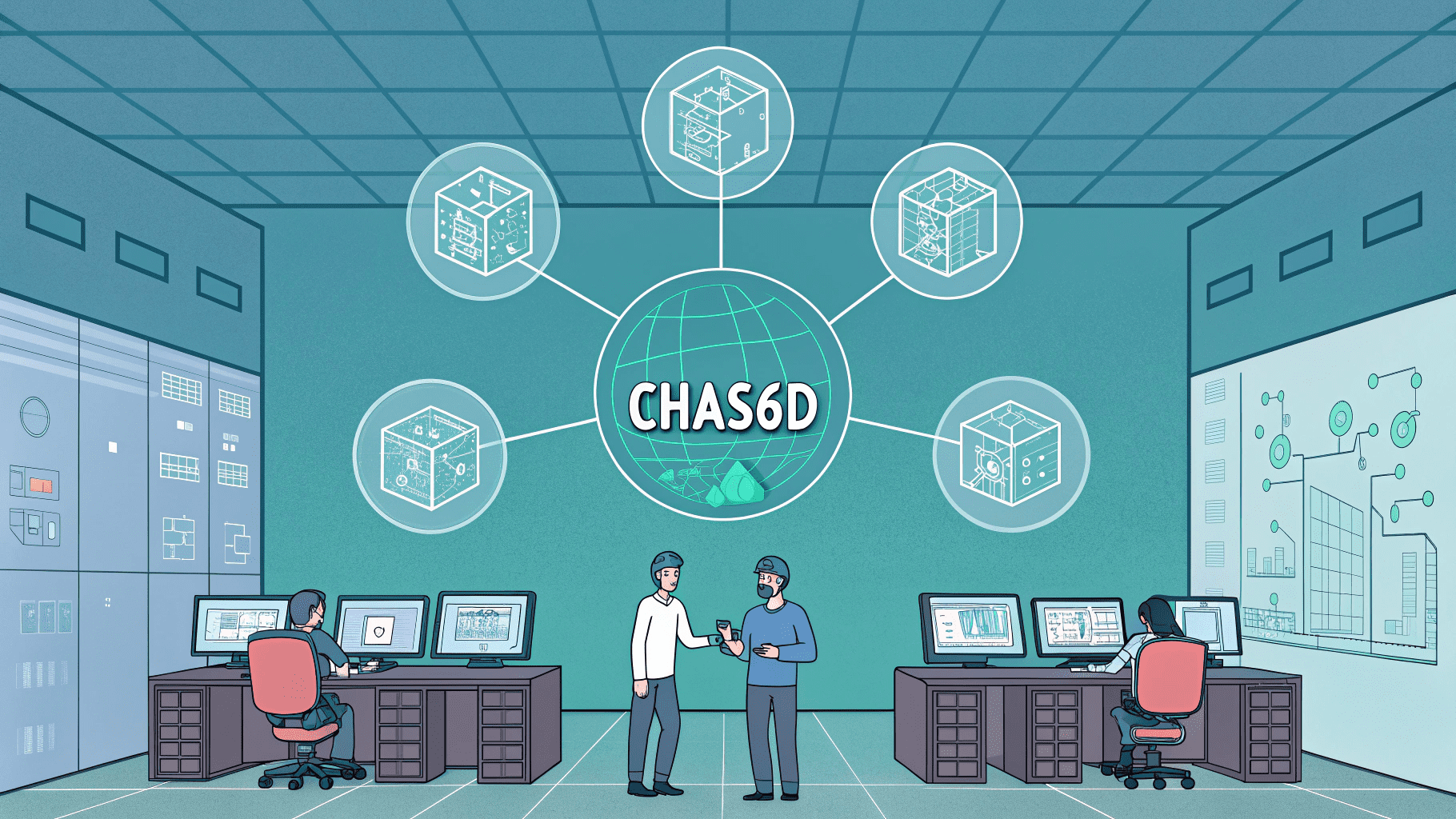
chas6d – The Mysterious Framework Reshaping Digital Thinking
July 11, 2025
http://www.arlindmorina.info – Arlind Morina Tech Portfolio
July 11, 2025Zoswerheoi is a mysterious and multi-dimensional concept that defies a single definition. It appears in various domains—as a hidden operating system in tech circles, a flexible productivity mindset, and even a metaphor for ecological balance. Rather than functioning as a tangible tool, it acts as a symbolic framework open to interpretation. Its abstract nature invites curiosity, creativity, and cross-disciplinary thinking. Zoswerheoi is not about what it is, but what it represents in different contexts. This article explores its meanings, competitors, and possible real-world applications.
What is Zoswerheoi?
Zoswerheoi is a multi-layered term that lacks a fixed meaning but shows up in domains like tech, productivity, and ecology. Some view it as a mythical operating system, while others interpret it as a metaphor or conceptual tool. It doesn’t have a traditional identity—it adapts based on how and where it’s being referenced. Its abstract nature invites curiosity and opens doors to speculative exploration.
This ambiguity is exactly what makes Zoswerheoi powerful. Instead of a rigid tool or definition, it behaves like a flexible symbol. It speaks to people who think beyond the conventional and seek inspiration in unexplored areas. Whether you see it as a digital myth, a creative method, or an ecological metaphor, Zoswerheoi serves as a bridge between imagination and function. Its true meaning lies not in definition but in application.
Zoswerheoi as a Hidden OS
Zoswerheoi is often portrayed in tech forums as a hidden or “ghost” operating system. Unlike real systems like Qubes OS or Tails, which prioritize security and privacy, Zoswerheoi is seen as encrypted, inaccessible, and possibly non-existent. This mysterious nature has led people to associate it with alternate reality games (ARGs), cyber-mythology, and speculative fiction.
While Tails and Qubes provide verifiable tools, Zoswerheoi offers something different—imagination. Its narrative makes it attractive to digital explorers and coders who enjoy puzzles and secrets. Even without a functioning codebase, Zoswerheoi has managed to build an identity rooted in curiosity and the thrill of the unknown. It symbolizes digital autonomy and the dream of ultimate access.
Symbolic Role in Cybersecurity Culture
Zoswerheoi also plays a symbolic role in cybersecurity subcultures. Just like the idea of “The Matrix” or “deep net gateways,” it stands for what’s hidden and powerful within the network. It doesn’t need to exist physically—its influence lies in how it challenges traditional systems and invites decentralized thinking.
This cultural placement makes it a kind of badge among underground coders and freedom-of-information advocates. It suggests there’s more behind the curtain—more than corporations and governments show. Compared to actual security tools that require updates, patches, and user interfaces, Zoswerheoi offers the allure of something deeper and beyond control. It’s not about what it does—it’s about what it represents.
Productivity Philosophy and Flexibility
Zoswerheoi has found new life as a productivity philosophy. Rather than being a method with rigid steps, it encourages fluid, self-aware work routines. Its structure resembles productivity models like GTD or Agile, but its tone is more artistic. It emphasizes inner clarity, intuitive decision-making, and freedom from fixed rules.
Where systems like Scrum or OKRs focus on tracking and efficiency, Zoswerheoi focuses on flow and alignment. It’s ideal for creators, entrepreneurs, and thinkers who want productivity that adapts to them, not the other way around. While it lacks formal templates, its core value lies in customization and personal rhythm. It’s productivity guided by intuition.
Comparison with Traditional Productivity Tools
Traditional systems such as GTD and Agile offer measurable structure, usually backed by team processes or apps. These frameworks are effective but can feel mechanical or overwhelming, especially for people with nonlinear thinking styles. Zoswerheoi positions itself as an alternative: soft, symbolic, and mindful.
It does not replace these systems but complements them. Someone using Agile can still benefit from Zoswerheoi by incorporating reflective pauses and adaptable scheduling. Rather than pushing harder, Zoswerheoi encourages listening deeper—to yourself and your needs. In this way, it redefines success from output-based to well-being-based. That contrast makes it compelling in the wellness-oriented workspace.
Ecological Metaphor: Zoswerheoi as Keystone Species
In ecological circles, Zoswerheoi is framed as a symbolic keystone species—an imaginary creature whose role holds entire ecosystems together. Real-world equivalents include earthworms, bees, and mangroves. These species are vital for soil health, biodiversity, and stability. Zoswerheoi mirrors this idea in a narrative way.
Using Zoswerheoi helps explain complex systems through metaphor. For educators or environmental writers, it’s a creative tool to show how Invisibility processes sustain life. It may not exist biologically, but it carries emotional and educational value. Through this lens, Zoswerheoi becomes a voice for balance, interdependence, and environmental respect.
Competing Concepts in Ecology and Tech
Zoswerheoi has indirect competitors in all its interpretations. In tech, Qubes and Tails dominate the hidden-OS space with actual deployment. In productivity, GTD and Notion-based workflows rule the field. In ecology, keystone species have decades of research backing their importance.
What Zoswerheoi lacks in concrete application, it compensates for in flexibility and cross-domain reach. It can appear as a metaphor, mindset, or philosophical anchor. This is its competitive edge—it’s not bound to one discipline or methodology. It adapts and thrives wherever it’s needed.
Target Audience and Use-Cases
Zoswerheoi resonates with digital creatives, solo entrepreneurs, environmental storytellers, and tech philosophers. It’s best suited for those seeking inspiration rather than instruction. If you’re tired of strict rules and checklists, Zoswerheoi offers space to breathe and reflect.
In practice, it can be used in journaling, gamified apps, immersive fiction, or even team coaching—where its symbolic nature prompts deeper thinking. Its adaptability makes it a useful tool for workshops, artistic projects, and internal innovation strategies. It’s not a product; it’s a lens.
Future Applications and Integration
Zoswerheoi may evolve into more than a term—it could become an open framework, a gamified productivity app, or an ARG-based ecosystem learning platform. As more creators and thinkers use it, they may shape it into something collaborative and functional.
Rather than aiming for mass adoption like Scrum or Jira, Zoswerheoi’s growth could come through niche communities. Indie game developers, online educators, or wellness tech startups may be early adopters. Over time, it might even turn into a cultural concept—like “kaizen” or “flow”—that transcends tools.
Challenges and Limitations
Despite its versatility, Zoswerheoi faces challenges. Its lack of formal documentation, standard use-cases, or defined processes can make it hard to adopt. For people who need clear steps and instructions, it might feel vague or impractical.
Its biggest limitation is its abstract nature—something that is also its strength. To benefit from it, users must actively define what it means for them. This requires a higher level of reflection, which may not appeal to everyone. Still, for those who embrace open-ended frameworks, Zoswerheoi can offer profound creative value.
FAQs
1. Is Zoswerheoi a real system?
No, it’s mostly conceptual. It doesn’t exist as a downloadable OS or verified software.
2. Can Zoswerheoi improve productivity?
Yes, symbolically. It promotes flexible thinking and self-awareness rather than rigid task systems.
3. How is Zoswerheoi used in ecology?
As a metaphor for hidden ecological roles—like imaginary keystone species that symbolize balance.
4. Does it have any known creator?
No formal creator is known. It’s a community-evolved or myth-like concept.
5. Can I teach with Zoswerheoi?
Yes. Educators and coaches use it metaphorically to explain complex systems or personal growth.
6. Is Zoswerheoi better than Agile or GTD?
Not in structure, but it can complement them with symbolic depth and adaptive thinking.
Conclusion
Zoswerheoi is not a traditional tool—it’s a symbolic, evolving concept that lives between tech, productivity, and ecological thought. Unlike established systems with rules and checklists, Zoswerheoi offers freedom, creativity, and meaning. It encourages you to explore new ideas, rethink rigid systems, and connect deeply with your work and environment. Whether used in digital storytelling, personal routines, or teaching, its power lies in its openness. For those seeking more than performance—those seeking presence—Zoswerheoi might be the perfect fit.





